Outback travel: The ultimate family guide

When we think ‘outback’, the iconic image is that of the red sand of Australia’s desert country. But, it also covers the remote tropical regions of Oz as well – think: Cape York, Kakadu, the NT/QLD Gulf Country and WA’s mighty north-west (encompassing the Kimberley and the Pilbara regions). By themselves, Australia’s deserts account for an estimated 70 per cent of the continent’s land mass. Pretty impressive, but not half as impressive as actually getting out there and exploring and camping in one (or more) of them. Nothing beats that sense of utter remoteness offered by the combo of an endless red, sandy horizon, topped by the blue skies synonymous with this country’s desert regions.
The attractions of outback touring go beyond that sense of isolation and remoteness and also take in the rich ties this landscape has with all Australians, whether it is the eons-old indigenous culture, or the more recent European explorers’ history. It is this sense of retracing the steps of early explorers that is one draw for visitors. This, in turn, is further enriched by the chance to experience that ‘sense of place’ so ingrained in Indigenous culture – along with the physical reminders of their long and continued residence here, in the form of reliable waterholes, petroglyphs, etc.
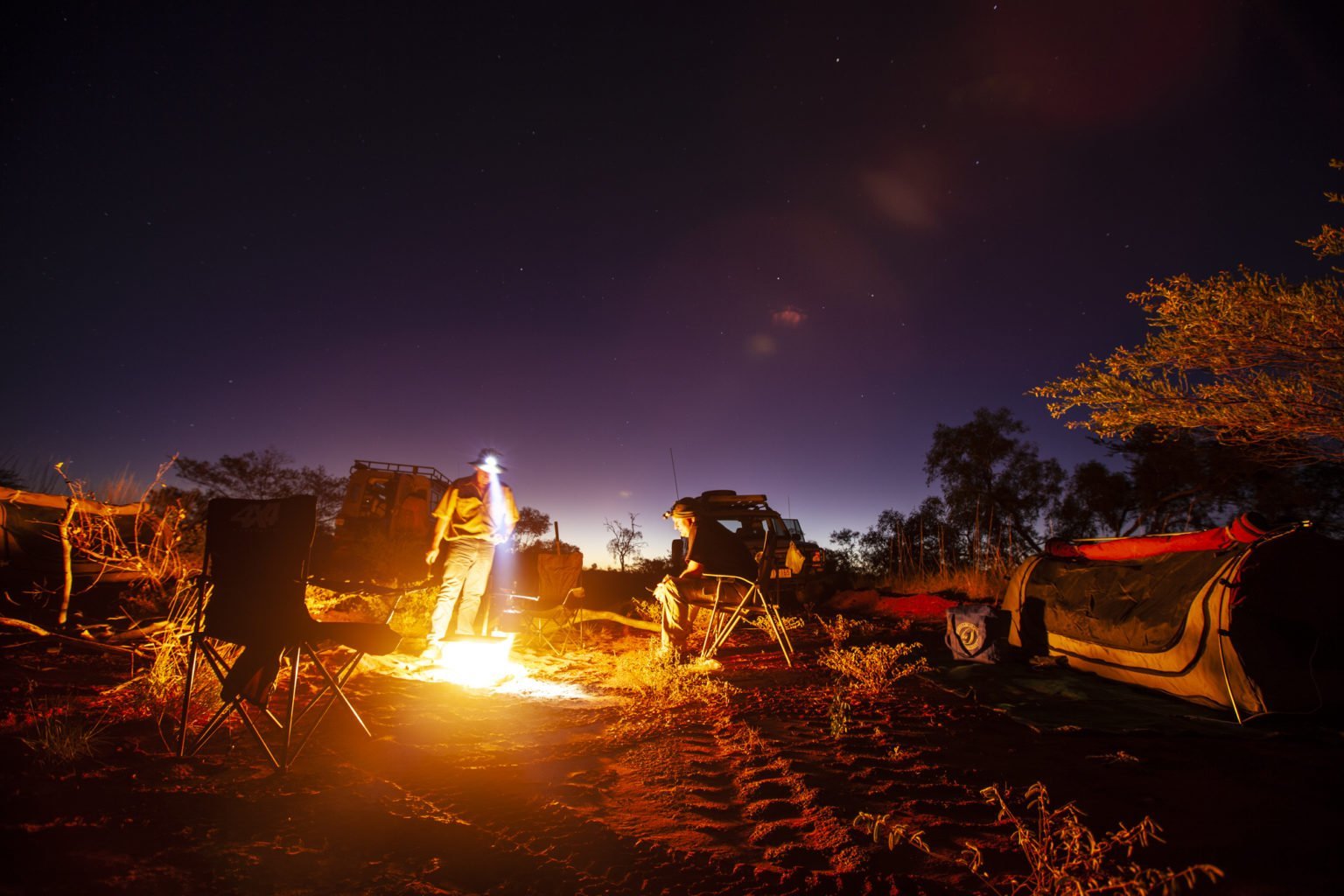
The other appeal is that, rather than being ‘the same thing every day’, a week or two (or longer) exploring one or more of Australia’s outback regions, really brings home how unique each of them is, in terms of the wildlife, Indigenous links, terrain, camping, the driving challenge and plenty more.
Yeah, it sounds impossibly romantic; packing the 4WD and heading to points unknown, but that notion of outback escapism needs to be, firstly, backed by a whole lot of research, planning and preparation, including perhaps upgrading your vehicle. Once that is out of the way – and the actual pre-trip prep can be more than half the fun – is when the real adventure starts. Let’s go…
Vehicle choices
Outback travel is punishing on vehicles due to the usually rugged tracks and roads, as well as the potential for water-crossings and steep, slippery tracks that need to be negotiated carefully. This all points to a 4WD as being the only choice for those who wish to experience the more remote (and beautiful) parts of Australia – you may need car loan to upgrade your existing vehicle. While the lure of a new vehicle with the latest mod-cons is all too real, try to exercise restraint and think realistically about both what you require and can afford. Seeking pre-approval for vehicle finance can be a good way to ensure you’re sticking within your budget, should you be looking to buy.
In terms of motivation, diesel engines are still the number one choice for long-distance remote touring, due to better fuel economy than the equivalent petrol engine, and the availability of diesel in very remote areas.
Then, you need to decide whether you go for a 4WD ute or a 4WD wagon and that choice is not always straightforward…
The outback workhorse
The 4WD dual-cab ute is probably the most popular option for serious and regular outback tourers. This is due to a number of reasons, starting with the fact these utility vehicles can carry a considerably heavier load than a 4WD wagon in the rear tray. That rear tray also adds always-welcome cargo storage space for travelling families: with the simple addition of a canopy (a hard shell that covers the ute tray) you gain copious storage space – far more than you will find in a wagon. Utes are built to lug heavy loads so are considerably robust, but they are longer and there are certain sacrifices you make if you opt for one. Chief among this is, even though they have improved immensely, utes do not offer as comfortable a ride for passengers as a 4WD wagon does. This is due to the firm rear suspension (usually ‘old school’ leaf-springs) that have to be quite stiff/firm so they can cope with those heavier loads.
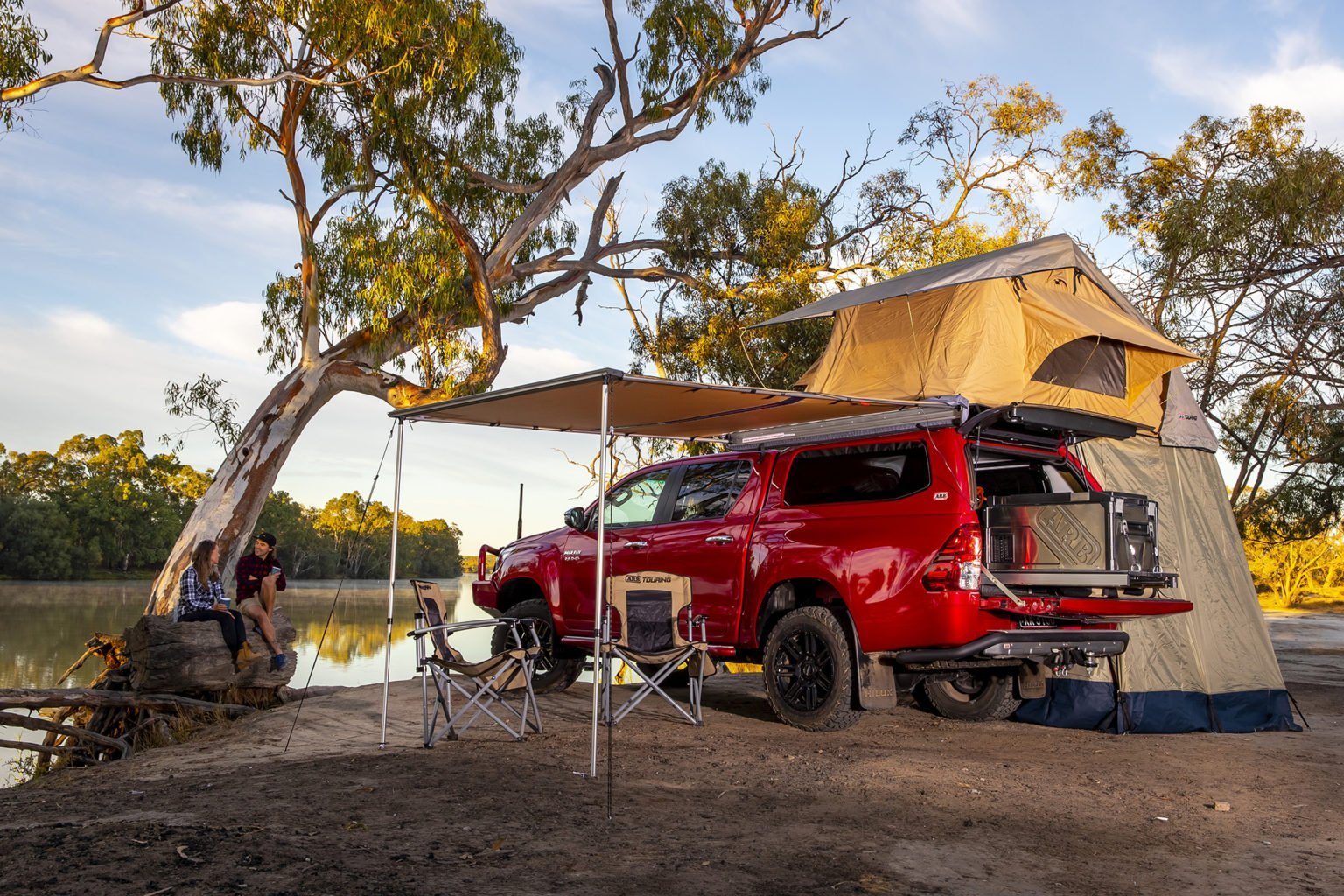
For families, the rear seat of a dual-cab (four-door) ute is, today, a better place to spend time in, but still not as comfortable as the second-row seating in a wagon, where most second-row seating these days can be tilted back for more comfort (a ute’s second row cannot). Still, a properly set up ute, with a spacious canopy that houses a cargo-drawer system for storing all essential gear, a fridge/freezer, auxiliary power setup, all your dusty camping gear, and further (light) gear loaded up on top on a roof-rack, makes for a formidable – and reliable – outback touring vehicle.
Circle the wagons
If you opt for a more comfortable 4WD wagon, you will have to work with less cargo space and a lower maximum payload figure (the legal amount of weight a vehicle can carry). But you will gain more security for your gear in the back, that aforementioned additional comfort for the kids, and a more supple ride overall, thanks to the use of coil spring suspension all-round (rather than the firmer leaf-spring rear suspension found on a ute). You will, as mentioned, have to pack more cleverly – and with that payload figure always in mind. As an example, most popular large 4WD wagons these days (think: Toyota’s LandCruiser or Prado; Ford Everest; Isuzu MU-X) have payload figures around the 600-650kg mark, compared to a ute’s 900-1000kg. Add a set of sturdy cargo-drawers, fridge/freezer, roof-rack, bull bar and driving lights, camping gear, food, water and yourselves to a 4WD wagon and you will soon be close to that maximum payload figure. (Some 4WD wagons do have higher payloads – the Land Rover Defender, at 850kg-plus, is an example.)
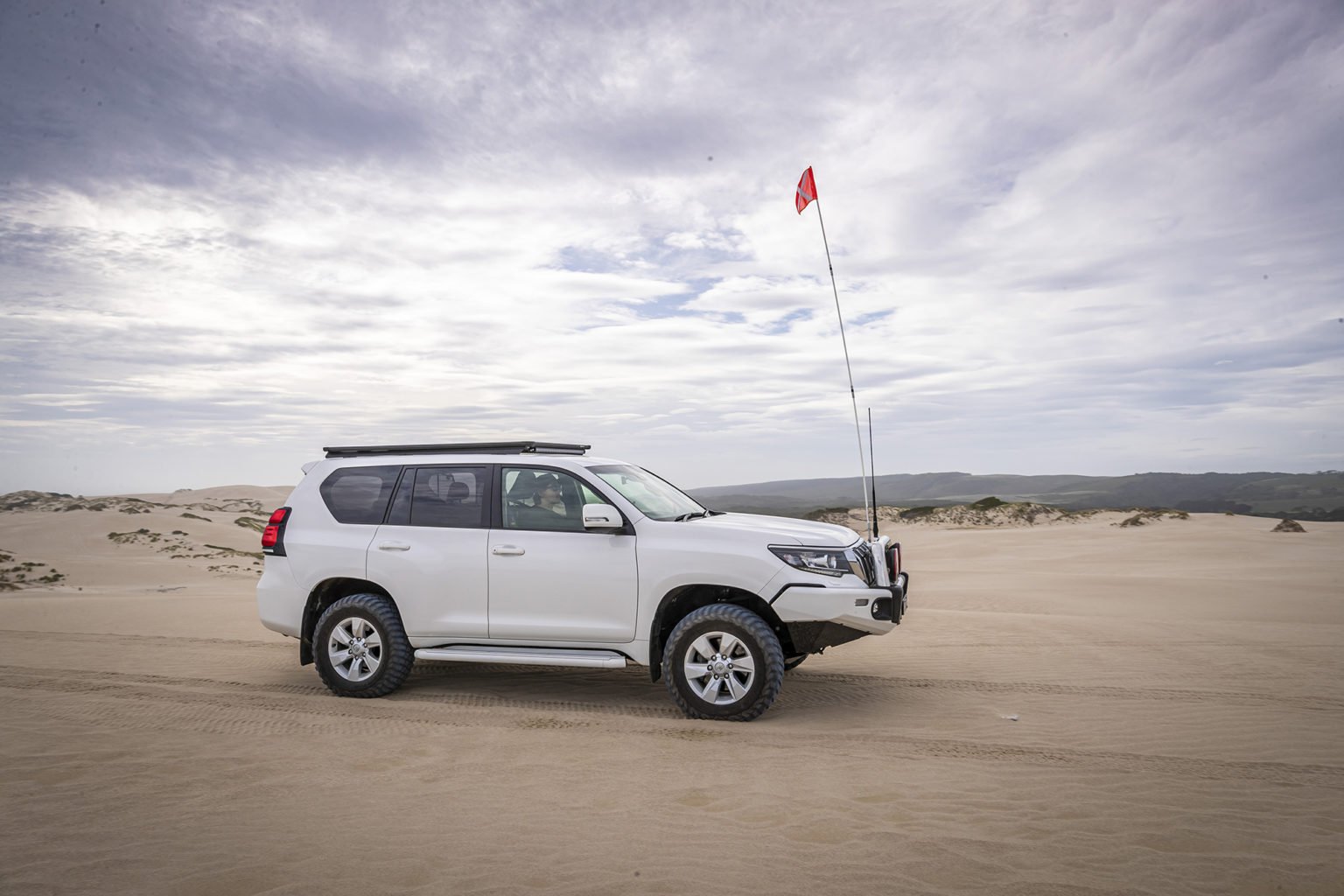
To ensure you can fit in all of the right camping gear, look for lighter-weight equipment, i.e., instead of two heavy canvas swags or a big canvas touring tent, look at lightweight alternatives (hiking tents, for example). There’s a tendency to throw every accessory on a 4WD but this is often overkill. A good example is cargo drawer systems. These are very handy, but you can set up a similar storage system in the back using robust plastic boxes that are lighter – you just have to make sure it ‘works’ effectively in terms of being able to reach and unload essential camping gear quickly once you arrive at your destination.
Vehicle essentials
For those contemplating an outback trip of, say, a couple of weeks or longer, there are a few accessories that will considerably enhance the overall experience. Here are our top five.
Fridge/freezer. These are brilliant. Running it off a portable power pack or an auxiliary battery system – or a portable solar panel setup at camp, means your food stays fresh and your drinks cold. If you can fit one in, a dual-compartment fridge and freezer unit (one compartment runs as the fridge, the other a freezer) is the best option.
All-terrain tyres. Nearly all 4WD wagons and utes come with road-biased tyres, due to the fact that even the most prolific outback travellers will still spend more time on the road. An all-terrain tyre features more robust construction and a chunkier tread pattern to ensure optimum traction on slippery or muddy surfaces. Plus, the thicker sidewalls increase protection against staking/puncturing.
Tyre repair kit. These are invaluable. Easy to use, a tyre repair kit can mean the difference between being stranded and getting back to civilisation.
Aftermarket suspension. For those who will spend considerable time on rough tracks, an aftermarket suspension setup is worth the price. These are designed specifically for rougher road surfaces and are stronger and more effective at providing a comfortable and safer ride.
Driver training. Modern 4WDs are very easy to drive on the road – no different to a regular car or station wagon – but if you intend using them for what they are designed for, we thoroughly recommend a 4WD driver training course. You will learn just how your vehicle works off-road (and why), and also how to drive to challenging conditions.
Planning sure does pay
For this writer – and I am sure for most adventurers – poring over a series of maps is an integral part of the trip planning process, regardless of your destination. With a focus on remote outback travel, having access to a number of maps – and accurate ones – is key to effective trip preparation*. The reasons are many and include the obvious of seeing where your destination is, in relation to where you’re starting point, along with giving you a great overall ‘visual’ of the country you will be covering in terms of access tracks, refuelling points (whether in towns, Aboriginal communities, or likely fuel drop-off/caching points), whether there are any water sources in the region, and – of course – the total distance of the route/track you will be following.
*While online mapping websites are great when you’re at home, they can be unreliable once you’re out of mobile phone range. There are many GPS mapping solutions; consider, too, going “old-school” with physical paper maps.
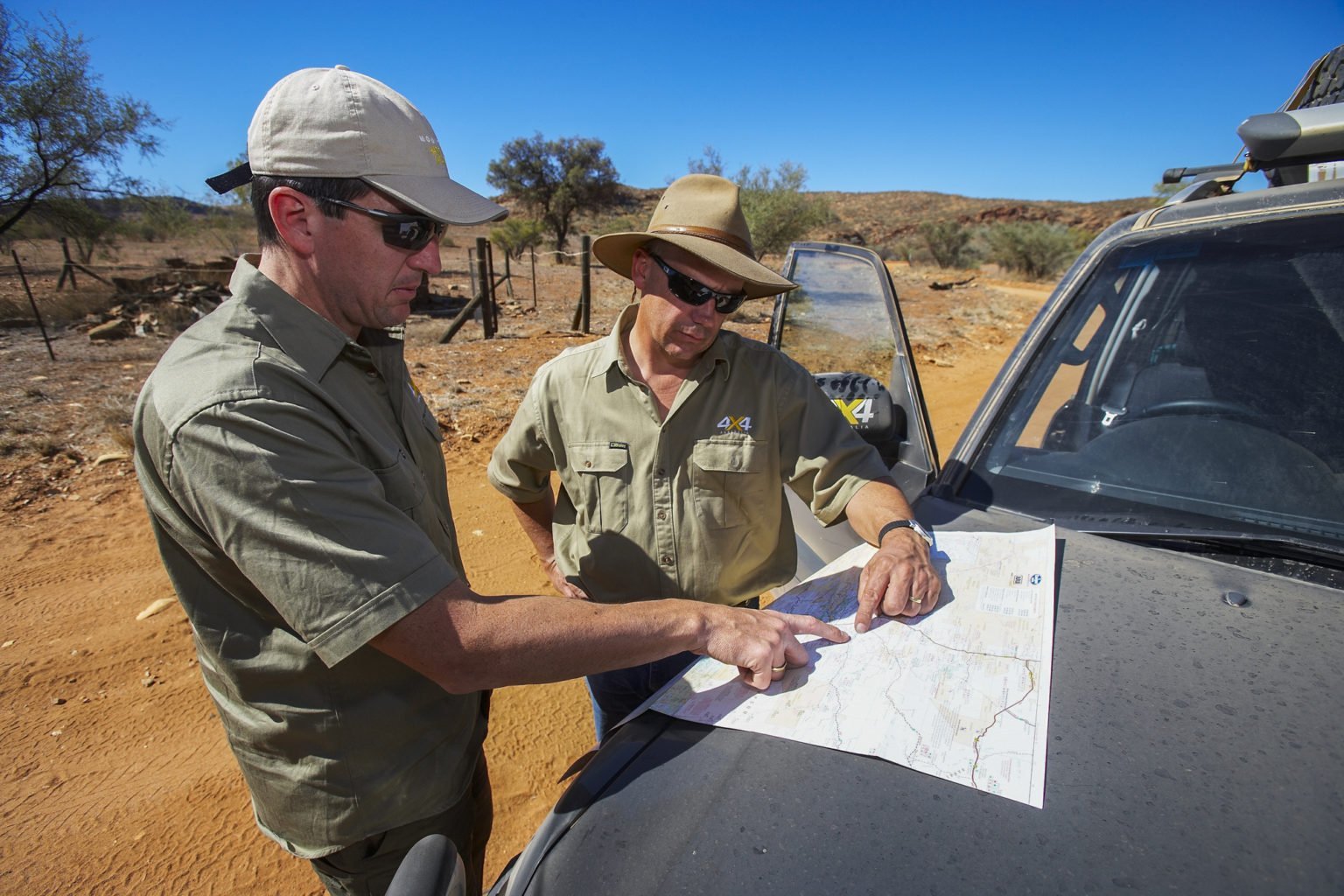
Large area maps are your best starting point (think: Hema’s excellent Great Desert Tracks maps), and from there you can move down in map scale and also start using digital mapping (websites and/or apps and GPS units). The key consideration here is how you’re going to navigate when out of mobile phone range and in case of an emergency.
Some, but not all, of Australia’s deserts are comprised of both national parks and Aboriginal-owned land, and one of the first checks you do need to do is that based around any essential permits you may need to traverse these lands. Most states’ national parks and the various Indigenous land councils have online permit systems that are, generally, pretty easy to access and fill in. Some permits may take longer to acquire than others, though, so bear that in mind and make sure you give the relevant authorities plenty of notice of your travel dates. By doing this it allows any communication to and from regarding your trip plans to be undertaken, thus ensuring the relevant authorities know exactly where you are – and how long for. As an example: this writer had a potential Arnhem Land trip quashed years ago after gaining approval from the Traditional Owners thanks to plenty of transparency in communication, only to have it stopped by a tie-wearing office-bound bureaucrat in Darwin. Just sayin’…
Never run dry
With the distances and remoteness of Australia’s deserts, planning for a trip here involves accounting for a number of unique factors, starting with one of the essentials: fuel usage for your vehicle – and yourselves.
Think of some of the longer desert tracks in Oz, such as the 1619km Canning Stock Route (CSR) or the 1324km Anne Beadell Highway, and you soon realise an accurate estimate of fuel consumption is crucial to a successful and safe adventure. As most know, any vehicle will use more fuel when driven on unsealed surfaces. Add in the mechanical effort needed to push a two-tonne-plus vehicle through sand and you will need to factor in far heavier consumption than ‘normal’. If you have a hungry vehicle at the best of times, perhaps now’s the time to look into upgrading to something more economical for on-road so your off-road fuel costs aren’t ever higher.
This would also be a good time to check on maps and/or any online resources as to the longest distance between re-fuelling points. As an example, the distance between fuel points on the CSR is a heady 977km, necessitating the planning of a fuel drop or two. Some travellers (mostly, but not exclusively), will have the capacity to lug the required amount of fuel – usually in jerry cans, sometimes in addition to a fitted aftermarket long-range tank – but that will depend on your vehicle’s load-carrying capacity. The temptation is to put jerrys up on the roof-rack, but the additional load up high does affect vehicle handling. You will need to check not your roof-rack load capacity, but the manufacturer’s maximum permitted load for the vehicle’s roof. You might be surprised how little that burly 4WD wagon of yours is legally allowed to carry up top. An alternative to roof-stored fuel is to fit an aftermarket rear bar that incorporates twin jerry-can holders (or, a single jerry holder and spare wheel carrier).
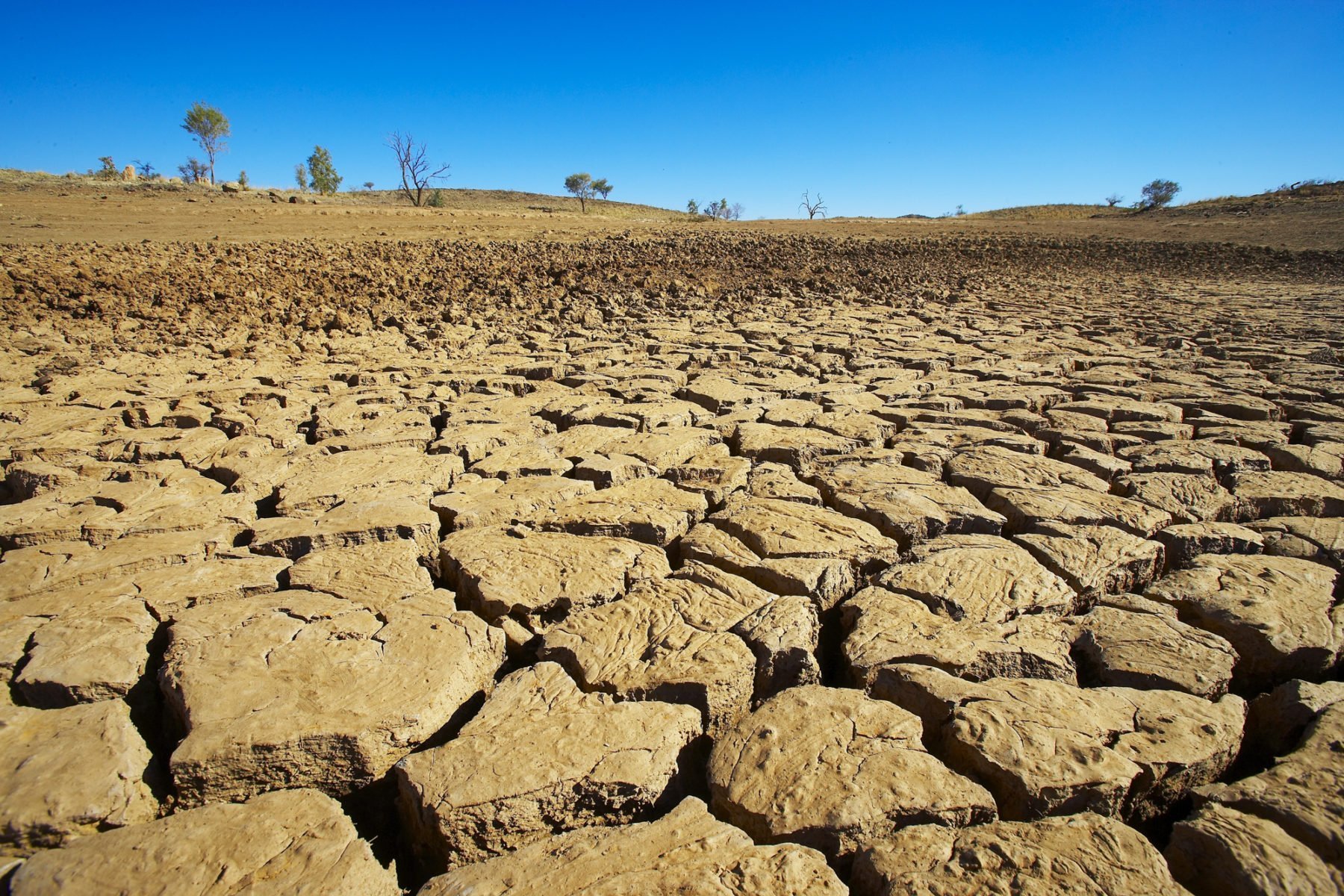
The other liquid essential on any desert trip is water. And by this we mean not only having enough water on-board for keeping everyone hydrated, but for other essential activities, such as cooking, washing up, personal hygiene and potentially having to top-up vehicles’ radiators. Again, distance (and amount of resupply points) plays a part in estimating how much you will need, but we’d recommend at least 20 litres per day, per person. Yep, that sounds a lot, and it soon adds up in terms of weight and eating into your vehicle’s load capacity. However, in this instance, it’s best not to quibble. A further tip that applies to both water and fuel storage is to ensure your jerry cans/containers are in excellent condition and that you don’t store all the liquid in one or two containers. If the unfortunate does happen and it springs a leak, you could lose a significant portion of your water/fuel supply – something to be avoided anywhere, but especially in arid country.
Perpetual motion
Safe outback travel means having a vehicle that is set up for the conditions and in tip-top mechanical condition. This is one of the first things that needs addressing as you plan your dream escape. A full going-over by a mechanic who specialises in outback travel prep is a must; checking for suspension (and tyre) wear and tear, as well as ensuring all the hoses and fitments in the engine bay are in robust condition and that all accessories are securely – and correctly – fitted, will mean you have already significantly reduced the chances of breaking down. The next step will be for them (and you) to draw up a list of essential spare parts that you will need to carry in the event that something does break – and this may still happen regardless of how ‘new’ the fitted parts are; the desert, in particular, is unforgiving. We’re not all accomplished bush mechanics (tip from this writer: travel with one if you can!) but more basic repairs, such as how to plug a punctured tyre (yep, a puncture-repair kit is another must-pack), should be within your skill-set if you plan on spending time in remote areas.
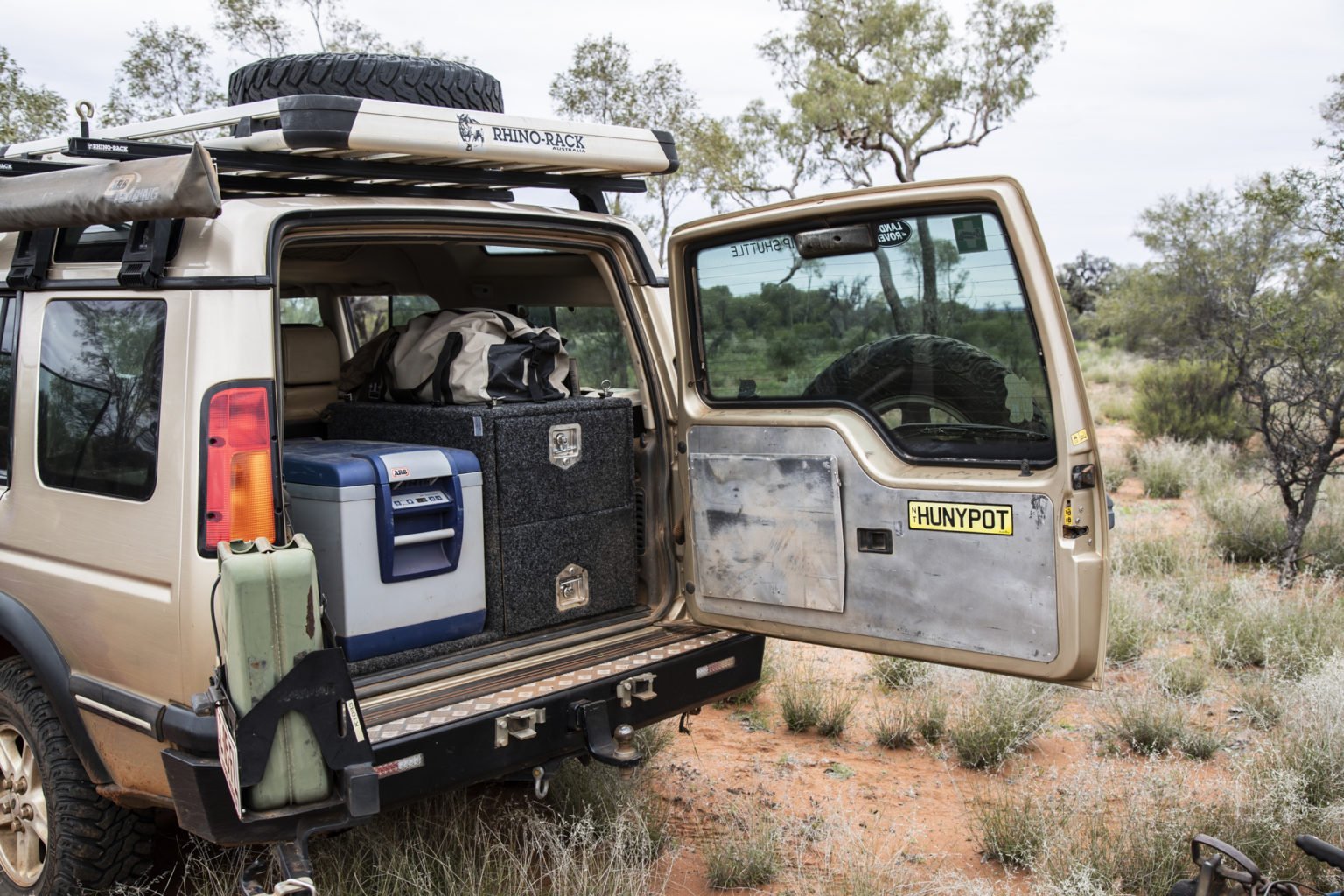
One near-essential is a second spare wheel/tyre; rough tracks can be murder on even the toughest tyres. Even though tyre plugs can work miracles, if you tear a tyre sidewall, the plugs don’t work; having a second spare brings additional reassurance and ups the safety factor when you are, literally, many miles from anywhere.
Driving through desert country usually means negotiating myriad dunes and these are often taller/deeper than your vehicle. Fitment of a sand flag is non-negotiable as it assists any oncoming traffic being able to see you, thus avoiding a head-on collision. Packing specialist sand-recovery gear – on top of your normal recovery kit, which should include snatch straps, shackles, ropes, gloves, tyre levers, jack, etc. – is another must. A set (or more) of Maxtrax offers great insurance for those driving over sandy tracks. These are very robust and also very easy to use. Plus, they don’t weigh much, offering excellent recovery bang-for-bucks.
The final piece of the vehicle puzzle is an effective communication setup. Not only does a reliable UHF radio (or Satphone; this is more for any emergency situation, as is a Personal Location Beacon) ensure you’re never totally stranded if the worst-case scenario eventuates; being able to call on the channel occasionally to see if there is any other traffic approaching helps reduce further the chance of a vehicle-on-vehicle incident.
Speaking of which, it goes without saying that at least one, but preferably more, of your expedition crew should have the latest Remote First Aid training – and a comprehensive First Aid kit should be packed.
Outback basecamp
Nothing beats pulling up in the middle of the desert in the evening, cooking up a storm and enjoying a few cold drinks as the sun sets over the dunes. That sounds like a dream scenario but, as long as you have the required remote power requirements to keep the lights glowing and the fridge cool, you’ll get to enjoy that dream-like outback dining experience every night on your outback adventure.
It does all come down to power. To this end, it’s worth expanding your regular off-road power options, such as a dual-battery setup or portable power pack, to include portable solar panels. These are relatively cheap, reliable and pretty much a standard inclusion on outback travel equipment lists. With the outback touring season usually the time of clear days – every day – being able to set up solar panels at camp renders the question of reliable power moot. There are myriad solar panel systems available, so you will need to research what suits your particular requirements. Also worth tackling is a course on basic auto-electrical repairs – or at least having some knowledge of how your vehicle’s auxiliary power setup works in case you have to troubleshoot power-related problems.
Travelling with a portable fridge means you will be able to keep food fresh for a decent amount of time in the desert. Making it last longer is possible by selecting a fridge/freezer combo unit, where a portion of the fridge is a dedicated freezer. Another trick to ensure fresh grub for longer is to get your local butcher/food supplier to cryo-vac your meat. By vacuuming all the air out of the container, the use-by date of meats in particular can be extended significantly.
Don’t forget you’re on outback time
One thing often forgotten in the dreaming, researching and final planning of the big outback adventure is just how much time it can take. Driving in sand, especially, is where you need to balance momentum and patience, and also where you need to realise it will take longer to negotiate numerous dunes than it would to traverse a long, straight outback road.
Even though the actual distance between two points may be ‘not that long’, driving in soft sand, having to perform the occasional recovery, and stopping to take in your surrounds, all takes time – and makes for the perfect excuse not to rush. There’s no reason you can’t stay at, say, Camp 15 on the Madigan Line for more than one night (and same applies to that speccy campsite at Cape York), as you’ve spent months and lots of money planning and prepping to get yourself out to a destination few people will ever experience, so make sure you allocate enough time to soak it up properly. After all, you’ll be on ‘outback time’, in a place that has seen thousands of years of Indigenous inhabitants and a few hundred years of explorers traversing it. We’re sure it – and you – will cope with spending a little bit of time out there…




